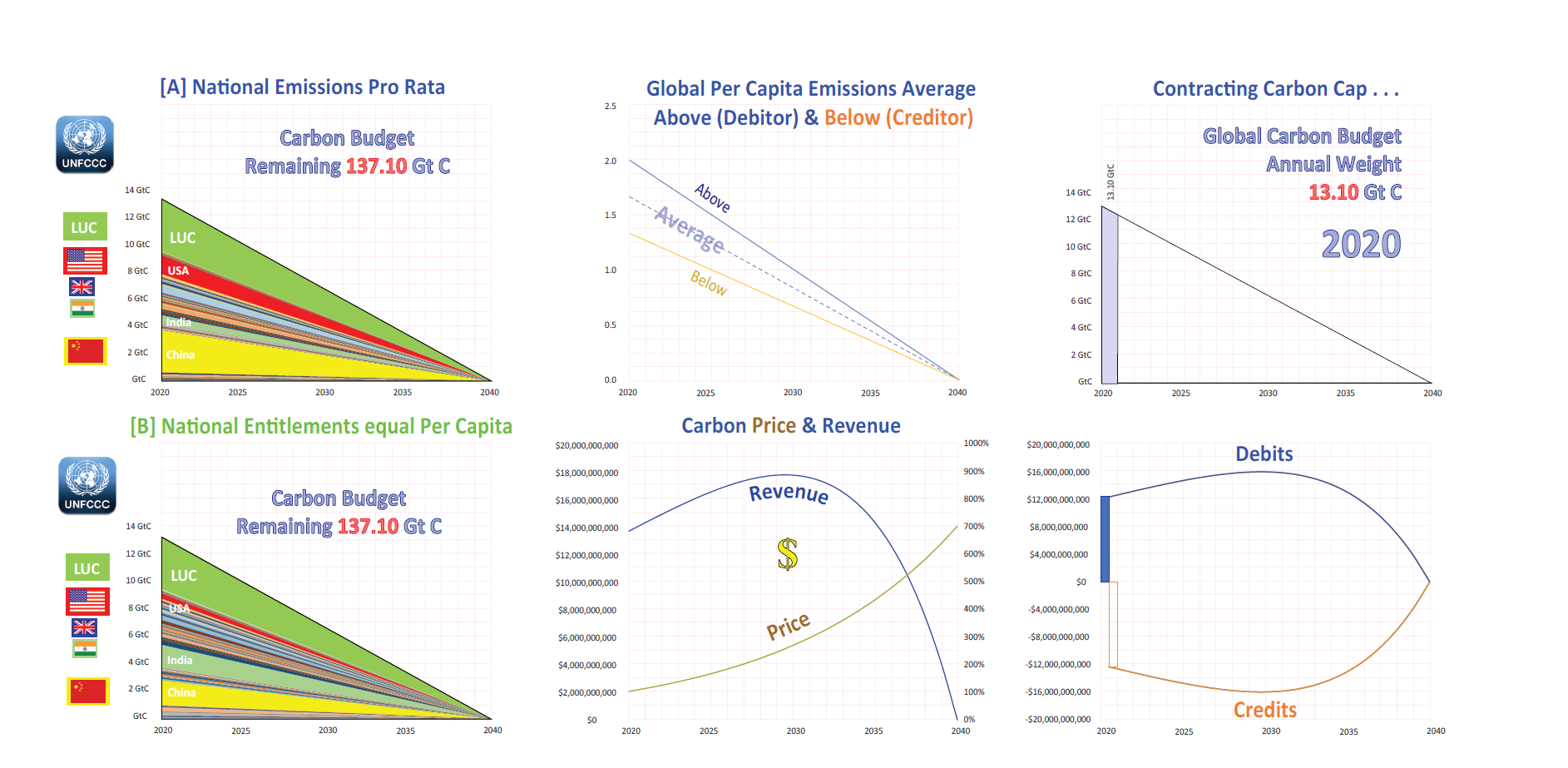Since 1990 GCI has well-tempered the focus on UNFCCC-Compliance with C&C
"The first Best Option" Carney
 Click logo to return to 'links-page'
Click logo to return to 'links-page'
In December 1997, a C&C-based way-ahead was debated in the final session of COP-3,
with strong interest from India, China the Africa Group the USA. The United States stated,
"C&C contains elements for the agreement that we may ultimately all seek to engage in."
GCI proposed Contraction & Convergence, Allocation & Trade at COP-2 in 1995.
In 2009, Adair Turner, then Chairman of UK Climate Change Committee,
told the Parliament that C&C is the basis of the UK Climate Act (UKCA).
*********************************
In his Reith Lectures 2020, Mark Carney described the Rajan-Global-Carbon-Incentive-Proposal (GCI) as
"the first best option."
With an inclusive full-term global carbon-cap, the GCI is effective
as it reconciles tension between over and under consumers of carbon.
This is equivalent to contraction with immediate convergence
as argued by the Government of China at COP-15.
Voices at the IMF have suggested the GCI proposal from Raghuram Rajan is possible as a development
of 'Special Drawing Rights' (SDR) with the integration of assiduously monitored emissions trading.
Renewable replacement rates

There are 42 slides in this 'heuristic'.
Each slide is identical except . . . .
[a] each slide shrinks by 1/20th of the total carbon budget weight (137.5 Gt C)
annually from 13.1 Gt C in 2020, to absolute zero Gt C in 2040.
[b] All weights (cumulative & marginal) are shown counting down for each year.
[c] The debit/credit balances expressed as global $s are shown for each year calculated
above & below the global per capita average of carbon emissions of the global budget.
[d] within this structure carbon-debitors pay into a global fund
while carbon-creditors withdraw from it.
[e] with a population base year for 2020 (7.5 billion).
It may seem 'dry' but this is quite deliberate.
[f] As with the carbon, all net calculations have been purged from these accounts.
[g] Globally aggregating any 'net-calculations' is only relevant to that absolute calculation,
which obviously has to be done first.
[h] The procedure shown, halves global emissions between 2020 & 2030 -
i.e. minus 50% (to avoid "uncontrollable ecosystem collapse" (Figueres),[i] & completes to -100% by 2040 which (sadly) still adds
(albeit) declining amounts of CO2 to the global atmosphere.